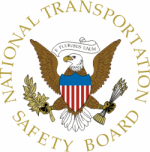Tue, May 25, 2010
Lengthy List Follows The Conclusion Of US Airways Flight 1549
Investigation
 The NTSB has issued 24 individual recommendations following
the conclusion of its investigation into US Airways Flight 1549,
which famously ditched in the Hudson River with no loss of life
following the ingestion of large birds into both engines of the
Airbus A320.
The NTSB has issued 24 individual recommendations following
the conclusion of its investigation into US Airways Flight 1549,
which famously ditched in the Hudson River with no loss of life
following the ingestion of large birds into both engines of the
Airbus A320.
The recommendations cover a range of issues, from proposed
changes in engine-out checklists as related to bird ingestion and
low-level dual engine-out training for pilots, to requiring
"applicants for aircraft certification to demonstrate that their
ditching parameters can be attained without engine power by pilots
without the use of exceptional skill or strength."
Several of the recommendations apply specifically to Airbus
aircraft. The NTSB recommends that the FAA require Airbus operators
to amend the ditching portion of the Engine Dual Failure checklist
and any other applicable checklists to include a step to select the
ground proximity warning system and terrain alerts to OFF during
the final descent, and to expand the angle-of-attack- protection
envelope limitations ground-school training to inform pilots about
alpha-protection mode features that can affect the pitch response
of the airplane. It is also recommended that the FAA require Airbus
to redesign the frame 65 vertical beam on A318, A319, A320, and
A321 series airplanes to lessen the likelihood that it will intrude
into the cabin during a ditching or gear-up landing and Airbus
operators to incorporate these changes on their airplanes.
 More generally, the NTSB recommends that the FAA work with the
military, manufacturers, and NASA to complete the development of a
technology capable of informing pilots about the continuing
operational status of an engine, require manufacturers of
turbine-powered aircraft to develop a checklist and procedure for a
dual-engine failure occurring at a low altitude, and once the
development of the checklist and procedure for a dual-engine
failure occurring at a low altitude has been completed, as asked
for in Safety Recommendation A-10-66, require 14 Code of Federal
Regulations Part 121, Part 135, and Part 91 Subpart K operators of
turbine-powered aircraft to implement the checklist and
procedure.
More generally, the NTSB recommends that the FAA work with the
military, manufacturers, and NASA to complete the development of a
technology capable of informing pilots about the continuing
operational status of an engine, require manufacturers of
turbine-powered aircraft to develop a checklist and procedure for a
dual-engine failure occurring at a low altitude, and once the
development of the checklist and procedure for a dual-engine
failure occurring at a low altitude has been completed, as asked
for in Safety Recommendation A-10-66, require 14 Code of Federal
Regulations Part 121, Part 135, and Part 91 Subpart K operators of
turbine-powered aircraft to implement the checklist and
procedure.
Seven of the recommendations were also passed along to the
EASA.
A final recommendation was made to the Department of
Agriculture. The safety board says the Ag department should develop
and implement, in conjunction with the Federal Aviation
Administration, innovative technologies that can be installed on
aircraft that would reduce the likelihood of a bird strike. It
issued a similar recommendation to the FAA.
More News
Dave Juwel's Aviation Marketing Stories ITBOA BNITBOB ... what does that mean? It's not gibberish, it's a lengthy acronym for "In The Business Of Aviation ... But Not In The Busine>[...]
Also: Tentative AirVenture Airshow Lineup, Supersonic Flight Regs, Private Pilot Oral Exam Guide, Boeing Deal The sport aircraft business can be a tough one... especially when Moth>[...]
Klyde Gets Nervous... Is Crazy Mike Enough? FMI: www.klydemorris.com>[...]
Also: Blackhawk’s Replacement, Supersonic Flight, Archer 1Q/25, Long-Range VTOL Program U.S. Secretary of Transportation Sean P. Duffy released an update on progress being ma>[...]
Also: Elektra Solar Trainer, U.S. Nationals Update, SeaMax M-22 Catches Fire, Bearhawk Aircraft At SUN ‘n FUN The Vans Aircraft engineering team recently provided its spring >[...]
 Aero-FAQ: Dave Juwel's Aviation Marketing Stories -- ITBOA BNITBOB
Aero-FAQ: Dave Juwel's Aviation Marketing Stories -- ITBOA BNITBOB Airborne 05.19.25: Kolb v Tornados, Philippine Mars, Blackhawk Antler Theft
Airborne 05.19.25: Kolb v Tornados, Philippine Mars, Blackhawk Antler Theft Klyde Morris (05.19.25)
Klyde Morris (05.19.25) Airborne-NextGen 05.20.25: Drone Regs, Zero-Emission Cargo, Door-Dash Drone
Airborne-NextGen 05.20.25: Drone Regs, Zero-Emission Cargo, Door-Dash Drone Airborne Affordable Flyers 05.22.25: RV-15 Finalizing, OSH NOTAM, Kolb v Tornado
Airborne Affordable Flyers 05.22.25: RV-15 Finalizing, OSH NOTAM, Kolb v Tornado




